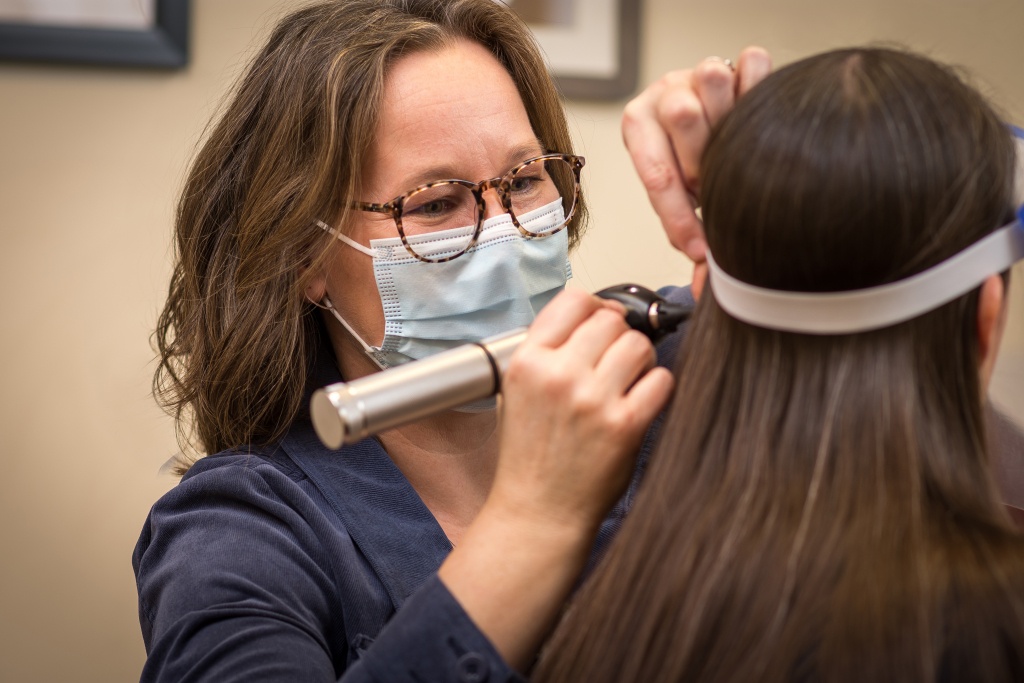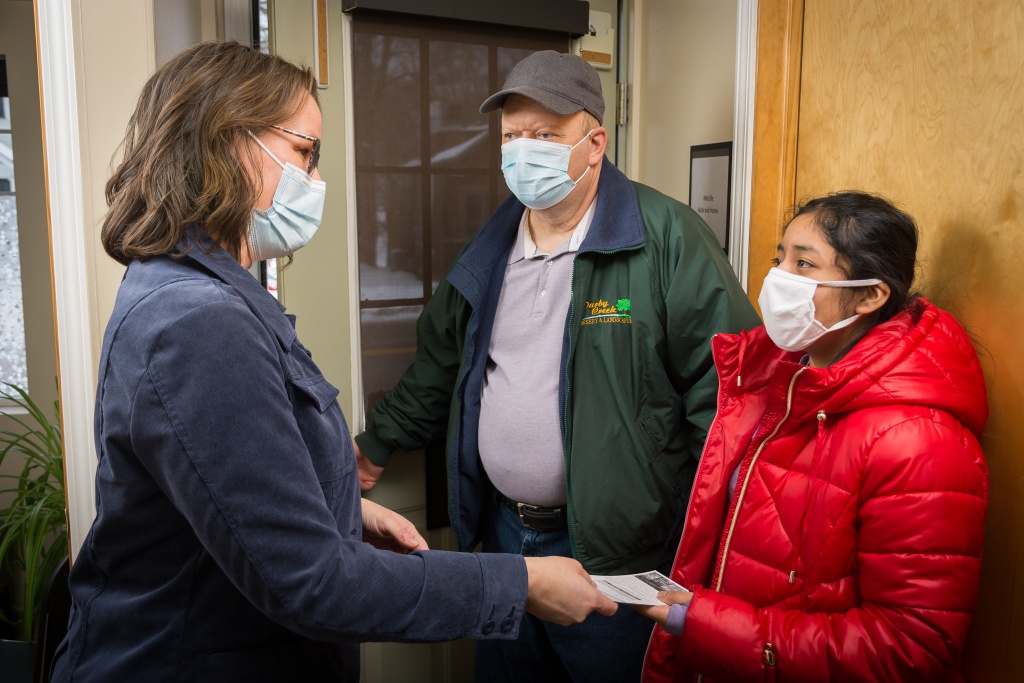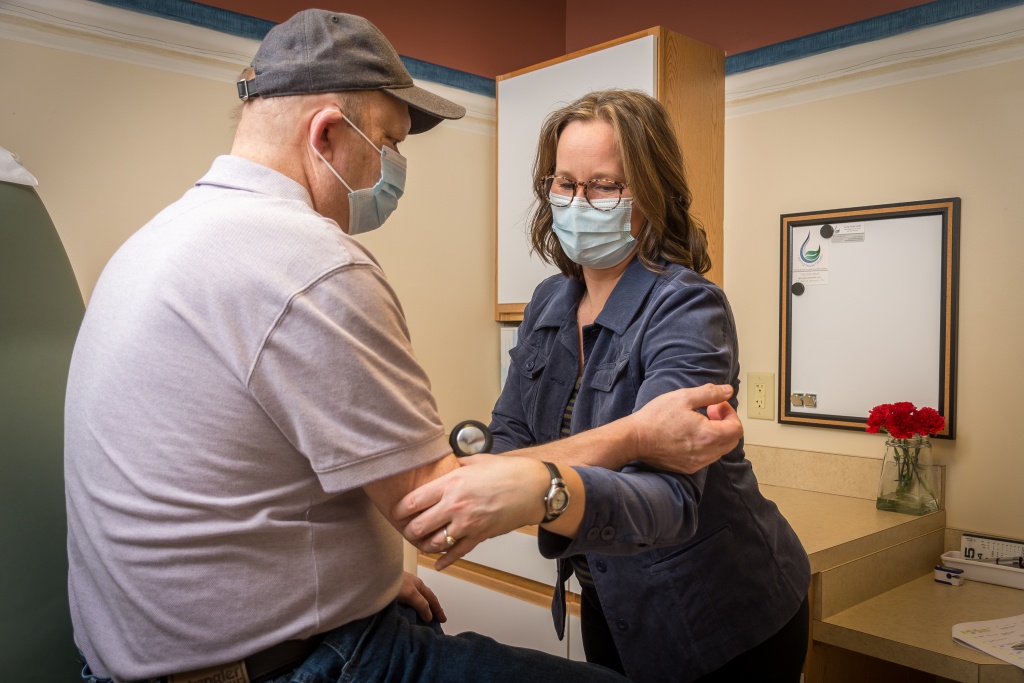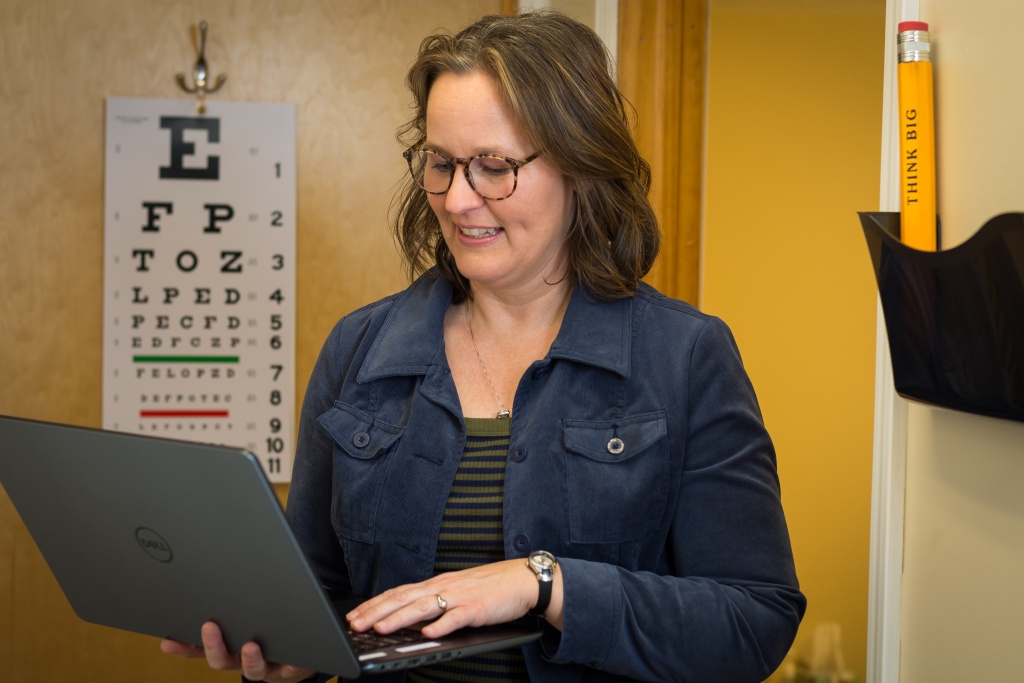This Independent Primary Care Physician Uses Compassionate Communication To Stay Close to Rural Patients
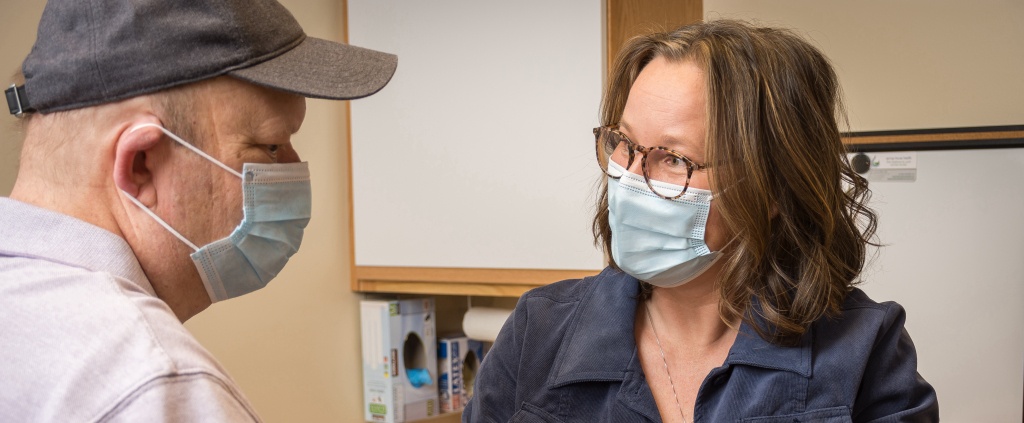
No properties were on the market when Dr. Tricia Labuda Bhat sought to open a primary care practice in central Ohio. Determined to find the right space, she began knocking on doors, even the ones without “For Rent” signs. After experiencing burnout working at large health systems, she was eager to authentically connect with new faces.
“Compassion is central to my motivation,” Dr. Bhat told Elation.
This earnest effort led her to the door of an insurance broker. Though it wasn’t advertised, he had a vacant space available. Coincidentally, when he initially purchased the property years prior, it was an empty health center. His father had been a family medicine physician, and he endearingly gravitated toward the property.
Compassion is central to my motivation.”
Though the previous owner had signed a seven-year lease for the center, it’d only been running for a year. In fact, two rooms — that were barely used — were completely outfitted for medical care with sinks and biohazard trash cans. This couldn’t have been a better fit for Dr. Bhat, who was building her first practice from the ground up all on her own.
Today, 10 East Main Street is more than just an occupied space; it’s now home to Dr. Bhat’s primary care practice, Spring House Health, which serves patients both in-person and virtually. After years of working in large health systems, she’s eager to develop closer connections with her patients and the surrounding community.
Serving rural communities
Although Spring House Health is only 45 minutes from where she grew up, opening a practice in Alexandria fulfilled a different motive. When Dr. Bhat moved to the area, she sought to provide care for rural patients who might not otherwise have adequate, quality healthcare. Since cities attract larger health systems, rural areas often can get left behind. This makes virtual visits even more critical, too.
“I recognize 20 miles outside of a city tends to be a healthcare desert almost with a lot more limited access,” Dr. Bhat emphasized.
Research also proves this unfortunate reality to be true. The Association of American Medical Colleges explains that fewer physicians, systemic poverty, and remote areas contribute to disparities in healthcare. Unreliable and inconsistent transportation, for instance, makes it difficult for rural patients to develop lasting relationships with physicians. Adolescent care, particularly, is important to her because adolescents are one of the least-serviced demographics in medicine.
“Unfortunately, adolescents don’t get connected with a lot of areas they could get help with, like mental health, cardiovascular risk reduction, weight management, lifestyle support, mitigation of substance use, [or addressing] dangerous or hazardous driving,” Dr. Bhat explained.
In rural communities especially, young adults typically have gaps in adequate healthcare. According to a 2014 study by the National Association of Pediatric Nurse Practitioners, teens living in rural areas may have access to primary care services if they’re in school, but the quality of services is likely to be low.
Fostering authentic connections between direct primary care and tech
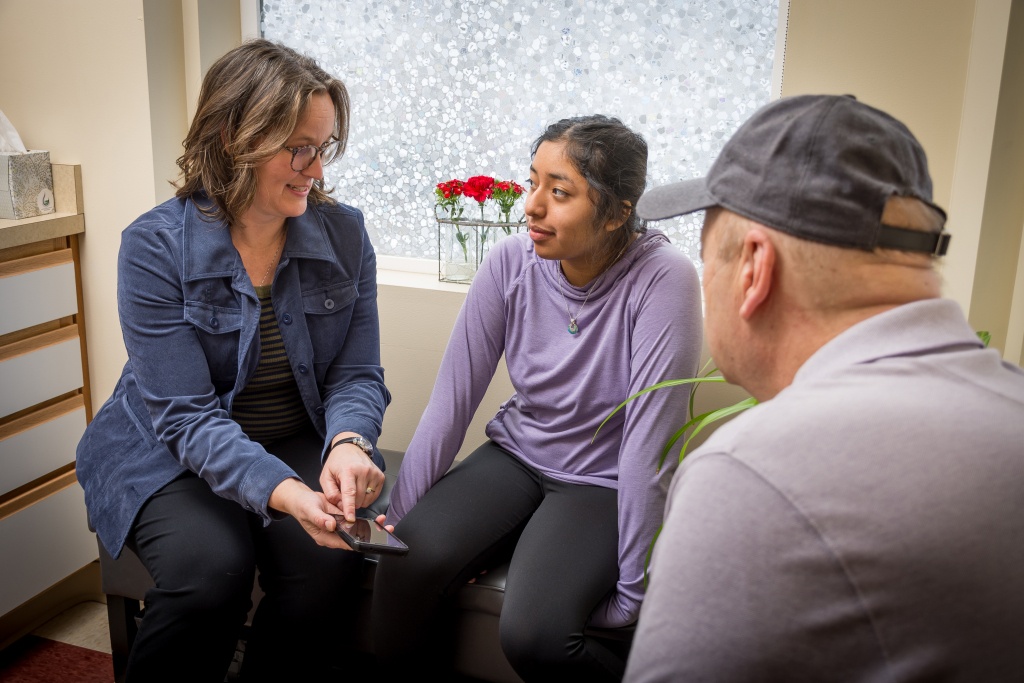
“In a large health system, there are multiple barriers to forming a personal relationship with a patient,” she added. “Direct primary care allows me to set up as much time as I think is needed for an appointment. It also allows me to dedicate time to care outside of face-to-face visits.”
Technology has helped Dr. Bhat better communicate with her patients. For one, she’s incredibly grateful to conduct telehealth visits. During an average workday, she sees about five to ten patients virtually. When the COVID-19 pandemic hit, she was already ahead of the telehealth curve and able to see patients virtually, thanks to using Elation for two years.
“There are features that work well with virtual visits,” she explained. “For instance, patients get emailed a visit summary to their Elation Passport. When they’re not in the office, I can’t give them a hard copy of what we talked about, but online, they’re still able to access and review our virtual visit treatment plans.”
Direct primary care allows me to set up as much time as I think is needed for an appointment. It also allows me to dedicate time to care outside of face-to-face visits.”
Patients are also able to schedule telehealth visits online, which helps Dr. Bhat tremendously since she doesn’t have a traditional administrative support staff. In addition to seeing patients, she can be found keeping up with COVID-19–related news, running the billing department, and more. Though she performs less glamorous tasks like cleaning the restroom, she’s also the one planting in the garden every spring. Needless to say, she’s a one-woman show.
What Dr. Bhat has learned

Toward the end of our conversation, Dr. Bhat also offered her perspective to anyone interested in developing more personal connections with their patients. Here are the takeaways she offered.
- Keep an open mind: “Recognize that there are many options and locations and organizations and ways of doing things,” she stressed. “Don’t just look down one tunnel.”
The possibility of running her own practice once seemed so far-fetched. During her residency program, Dr. Bhat recalls being handed a binder on how to run a business. At the time, she dismissed any possibility that she’d run her own practice and admittedly remembers saying, “I just want to know how to take care of high blood pressure and depression.”
- Find mentors and build alliances: Especially if you’re feeling lost, finding mentors can help give you more direction in where you want to go. Before Dr. Bhat was ready to establish her own practice, she read a magazine article discussing his direct primary care practice written by then- President of Ohio Academy of Family Physicians. She clipped it out and held it close.
“Even if you’re not ready to do what your mentors are doing, you can still learn from them,” she said. “When I first read the article, I knew I wasn’t at a point where I could do that, but I knew when the opportunity arose, that was the direction I wanted to go.” - Take care of yourself: Wellness has been one of Dr. Bhat’s values ever since she herself was a teenager. She was involved with sports in high school and college and still today coaches young athletes outside of work. She’s involved with her religious community, emphasizing that spiritual wellness is part of the larger holistic health picture. She even fosters refugee youth and homeschools her own children. Being involved with these community activities helps her feel more fulfilled, which helps her connect authentically with her patients.
“Recognize what makes you happy,” Dr. Bhat advises. Since an independent primary care practice helps her live her true values, Dr. Bhat feels fulfilled in bridging the gap to her community, especially one so close to her roots.
